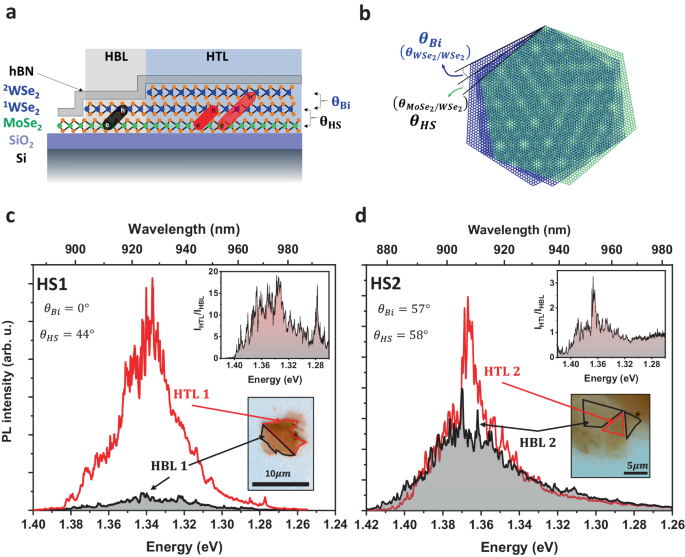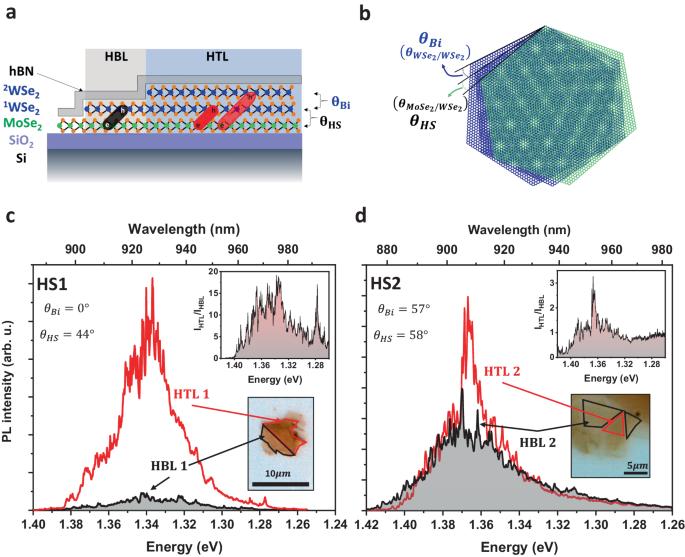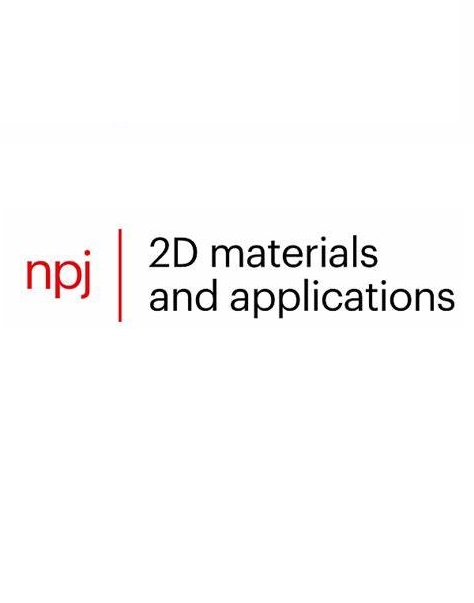扭曲的 WSe2/WSe2/MoSe2 异三层膜中层间激子发射的放大作用
IF 8.8
2区 材料科学
Q1 MATERIALS SCIENCE, MULTIDISCIPLINARY
引用次数: 0
摘要
基于过渡金属二卤化物的范德华异质结构所表现出的物理性质取决于其单层成分的扭转角和堆积顺序。特别是在 II 型异质结构中,低能光致发光由层间激子主导,导致发射率较低,极大地影响了其光电应用性。本研究报告了由 WSe2/WSe2/MoSe2 扭曲层组成的异质结构的光致发光量子产率。我们的研究结果表明,与 WSe2/MoSe2 异质层相比,三层体系中的附加 WSe2 单层可根据 WSe2/WSe2 扭转角度将低能光致发光增强一个数量级以上。此外,结合密度泛函理论计算和提取的圆极化程度,我们确定了源自附加 WSe2 层的杂化态的激子特征。除了对二维半导体异质结构中的杂化效应有了进一步的了解,我们的发现还提供了一种可行的方法来增强范德华异质结构中的发射,这与研究激子的基本特性和实现高发光率的光电应用息息相关。本文章由计算机程序翻译,如有差异,请以英文原文为准。


Amplification of interlayer exciton emission in twisted WSe2/WSe2/MoSe2 heterotrilayers
Van der Waals heterostructures based on transition metal dichalcogenides exhibit physical properties that depend on their monolayer constituents’ twisting angle and stacking order. Particularly in type-II heterostructures, low-energy photoluminescence is dominated by interlayer excitons, resulting in low emission yields, which drastically hampers their optoelectronic applicability. This study reports on the photoluminescence quantum yield of heterostructures consisting of WSe2/WSe2/MoSe2 twisted layers. Our findings show that the additional WSe2 monolayer in the trilayer system enhances the low-energy photoluminescence by more than an order of magnitude depending on the WSe2/WSe2 twist-angle in comparison to their WSe2/MoSe2 heterobilayer counterpart. Furthermore, combining density functional theory calculations and extracted degree of circular polarization, we identify excitonic signatures arising from hybridized states that originate from the additional WSe2 layer. In addition to providing an additional understanding of hybridization effects in 2D semiconducting heterostructures, our findings provide a viable method to enhance emission in van der Waals heterostructures, relevant for studying the fundamental properties of excitons and enabling optoelectronic applications with high luminescence yield.
求助全文
通过发布文献求助,成功后即可免费获取论文全文。
去求助
来源期刊

npj 2D Materials and Applications
Engineering-Mechanics of Materials
CiteScore
14.50
自引率
2.10%
发文量
80
审稿时长
15 weeks
期刊介绍:
npj 2D Materials and Applications publishes papers on the fundamental behavior, synthesis, properties and applications of existing and emerging 2D materials. By selecting papers with the potential for impact, the journal aims to facilitate the transfer of the research of 2D materials into wide-ranging applications.
 求助内容:
求助内容: 应助结果提醒方式:
应助结果提醒方式:


